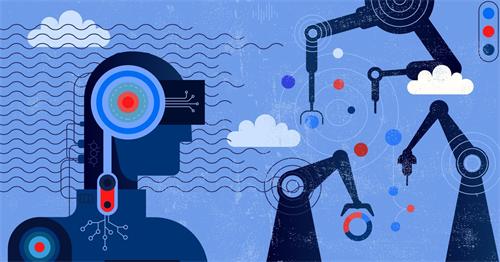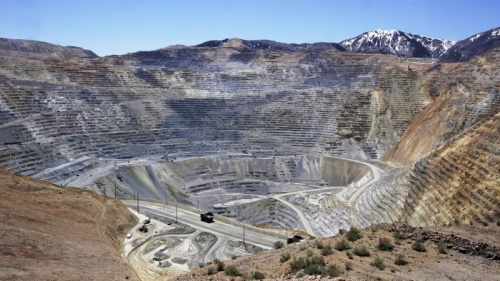AI Productivity Paradox: Why Tech Boom Isn’t Boosting GDP

In recent years, artificial intelligence (AI) has advanced rapidly—from generative AI tools like ChatGPT and GitHub Copilot to widespread applications in automated office systems and intelligent manufacturing. We are witnessing a rapid surge in technological innovation, particularly driven by artificial intelligence, that many compare to past industrial revolutions. In theory, such sweeping advancements should lead to strong economic acceleration. However, the actual outcomes tell a different story: productivity improvements have been modest, and economic growth in regions like the U.S. and EU has remained disappointingly slow. This is what’s known as the “AI productivity paradox”—booming technology, but stagnant macroeconomic indicators.
Over the past five years, AI has attracted hundreds of billions of dollars in global investment and has permeated nearly every industry, from education and healthcare to finance and manufacturing. In theory, such efficiency tools should significantly boost productivity. However, major economies are still seeing only modest gains in labor productivity. Why hasn’t the technological dividend brought by AI translated into tangible GDP growth?
As early as 1987, Nobel laureate Robert Solow pointed out the now-famous “computer paradox”: “You can see the computer age everywhere but in the productivity statistics.” Today, the same paradox appears to be repeating itself with AI. Despite clear improvements in office efficiency, reduced repetitive labor, and optimized supply chain management, GDP data offers little sign of a corresponding leap.
Why Hasn’t AI Translated Into GDP Growth?
1. Time Lag of Technological Dividends
AI is a general purpose technology (GPT), akin to the steam engine, electricity, or the internet—groundbreaking innovations that historically took decades to deliver structural economic transformation. In its early phase, AI is mostly improving specific workflows rather than overhauling entire production systems. We’re still in the “implementation stage,” not yet the “harvest stage.”
2. Winner-Takes-All and Industry Concentration
AI’s benefits are unevenly distributed. Today, the top 1% of global tech giants hold about 87% of AI patents, and AI-driven productivity gains are concentrated in high-tech sectors like IT and finance. This concentration amplifies the Baumol effect: labor and capital find it hard to shift from low-productivity to high-productivity sectors, which suppresses overall productivity growth. Moreover, while developing countries have yet to reap the benefits of AI, they bear a disproportionate share of the environmental cost, such as handling e-waste.
3. GDP Fails to Capture “Intangible Value”
AI has indeed created vast value, much of which isn’t reflected in market transactions and therefore is excluded from GDP. For example, Meta’s open-source model LLaMA 3 embodies over 260 million hours of free labor from global developers, with a theoretical value of $340 billion—yet this “priceless labor” isn’t captured in monetary terms and thus is invisible in GDP calculations. Similarly, household AI tools like robot vacuums save time and effort but their “replacement value” is barely acknowledged in national statistics.
4. Supply-Side Gains Without Matching Demand Growth
AI’s strength lies in improving supply-side efficiency. But without corresponding demand-side expansion, technological progress may even shrink GDP. For instance, AI reduces production costs, lowering prices. Even if sales volume rises, total sales revenue might fall—thus statistically reducing GDP. In other words, AI acts more as a refined substitute than a creative disruptor—optimizing old processes without yet creating enough new markets or consumer demand.
How to Break the “AI Productivity Paradox”?
AI is not about replacing human labor wholesale; it’s about enhancing efficiency and extending the boundaries of creativity. This requires a systematic upskilling of the workforce so that more people can acquire AI competencies and take on more complex tasks with AI assistance. Only when human capital evolves in step with technological progress can the dividends of innovation be fully realized.
Governments and businesses must foster this synergy through policy incentives and open-platform initiatives that dismantle “technological silos” and build cross-industry AI ecosystems. This is the path to a true technological leap and widespread value creation.
In the AI era, we also need new metrics—such as overall welfare, real-time value, and knowledge labor contribution—to more accurately reflect the societal impact of technological progress. To stimulate economic growth, AI must do more than “replace old methods”—it must invent new lifestyles and consumption scenarios. For instance, AI-driven virtual education, smart health advisors, and personalized art creation are all emerging fields with enormous potential. Once these new demands are unlocked, the economic structure will transform, and GDP growth will naturally follow.
AI may well be the ignition point for the Fourth Industrial Revolution, but its economic effects won’t unfold like a fairy tale. Over the next decade, we will gradually see its profound impact on reshaping labor division, redefining value systems, and enhancing human creativity. Instead of fixating on short-term GDP figures, we should focus on AI’s long-term transformation of how we live, work, and thrive.



